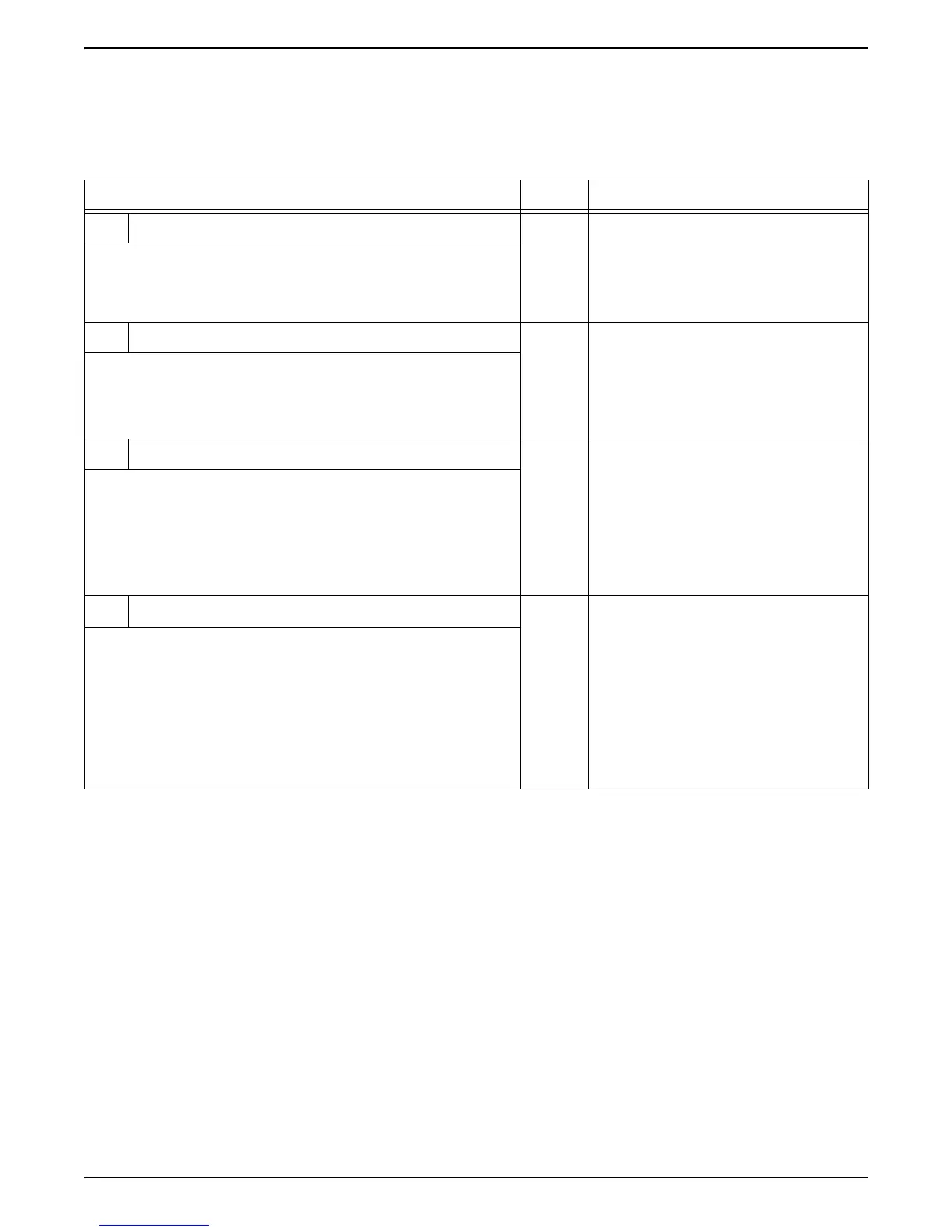DSG-423 FUEL SYSTEM
04-24
The pinpoint tests below should be performed after the preliminary tests and “Engine Cranks but Will Not Start”
chart Steps 1-3. Any electrical diagnostics should have been performed to eliminate any sensor, GCP or solenoid
valve problems before proceeding.
Diagnostic Aids
Regulator Assembly (Converter & FCV): If no other problems have been identified, replace the fuel management
assembly with a known good part of the same pressure range. Retest.
Emission Failure - Rich Mixture
Test Step Result Action to Take
1 Check for clogged or restricted air filter. Yes
No
This would indicate a clogged air
cleaner as the cause. Replace as
necessary.
Go to Step 2.
• Remove the air filter.
• Start the engine and re-check emission levels.
Has the (rich) emission failure been eliminated?
2 Check carburetor air valve for binding. Yes
No
Refer to section 475-1 for servicing the
carburetor.
Go to Step 3.
• With the air cleaner removed, pull the air valve piston
upwards to ensure free movement of the carburetor air
valve.
Is the air valve binding?
3 Check air valve operation. Yes
No
Refer to section 475-1 for servicing the
carburetor.
Go to Step 4.
• Using the WTK-1 test kit, connect the vacuum gauge
between the carburetor and the FCV valve to measure the
carburetor air valve vacuum (AVV).
• With the engine at idle and accelerating observe the
amount of measured vacuum.
Is the measured vacuum outside the specifications?
4 Check regulator operation. Yes
No
The Regulator is functioning properly
and the problem is with the FCV valve
or vacuum hoses. Inspect the vacuum
hoses and fittings, replace as
necessary. Replace the FCV valve
and retest.
The Regulator is malfunctioning. See
section 475R-1 for service of the
regulator.
• Using a secondary pressure gauge described in section
475G-1. (note: the secondary spring color and pressure
range)
• Start the engine.
Is the pressure constant and at -1.5 inches of w.c. as
specified?
